There is a bold plan underway to bring Mallee Emu-wrens back to South Australia, where wildfires have wiped them out. Simon Verdon details the decline of this mysterious and beautiful mallee bird and the efforts underway to save the species.
2014
Monday, January 13th The heathlands stretch out in every direction, as far as the eye can see. If you squint in the sun you can see a thousand hues of green. In finer weather, this wilderness is inspiring but now the heat is oppressive. Standing on a dune, the wind is like a furnace and offers no relief. There is only the blazing blue sky. The banksias appear oven-dried. The Mallee Emu-wrens of South Australia are struggling to survive this heatwave. For these birds, this is a time to hunker down and survive until the rain comes.
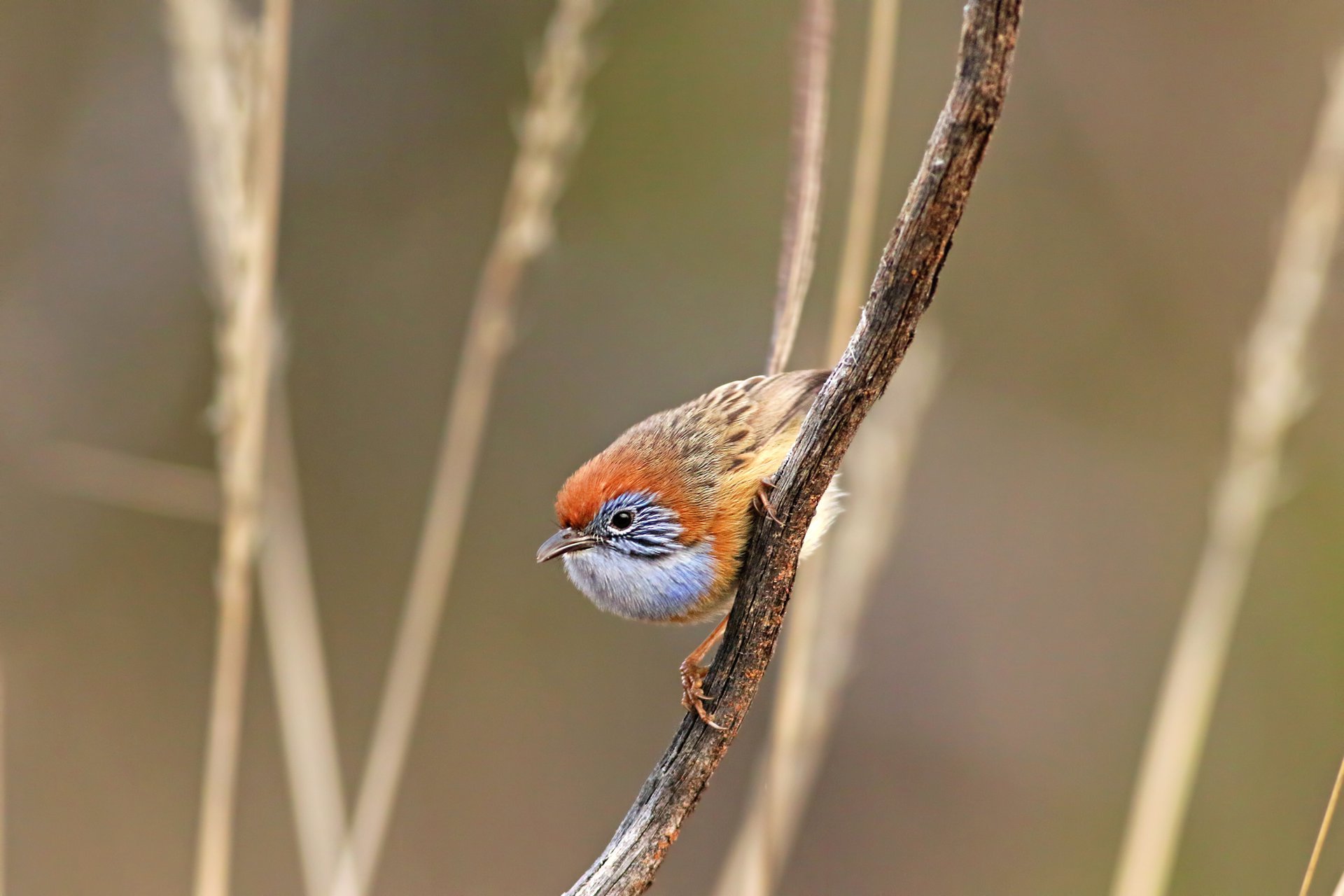
Tuesday, January 14th Reports are coming in. Vague at first but increasingly clear now. Dry lightning. Smoke sighted. A wind change predicted. Multiple wildfires have ripped through South Australia. The heathlands in Ngarkat have been hit pretty hard by the sound of things, and the reports from Billiatt are even worse. There are phone calls criss-crossing the country. Imagine the calls as continental arcs, charged with anxiety. People are worried; they think the fires have wiped out the last of the Mallee Emu-wrens in South Australia. This is how extinction happens. Sometimes it is a solitary bird, singing for years into the empty night, other times it is this – a whole population gone in one fiery instant.
One week later…
Monday, January 20th Billiatt Conservation Park and Ngarkat Conservation Park were both burnt at once, ignited by separate lightning strikes. It is devastating to stand on the dune where only a week ago extensive heath stretched out to the horizon. Now, all there is only ash and sand. There are some small green patches here and there, which somehow escaped the flames. However, none of them contain Mallee Emu-wrens. They lived in the most flammable vegetation in the landscape: the hummock-grass Triodia. When the lightning strikes, Triodia becomes a tinderbox. They are gone.
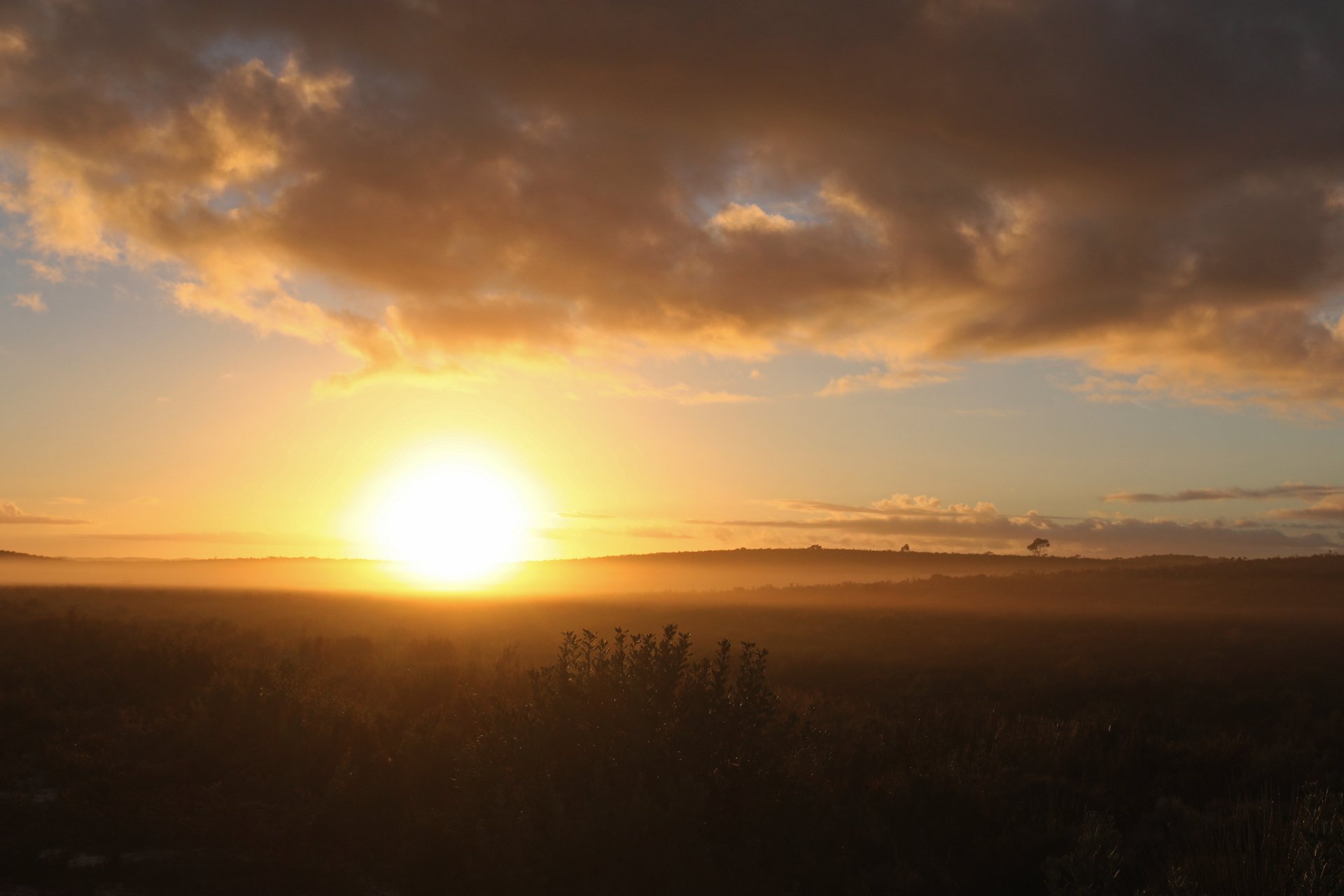
One year later…
2015
Wednesday, May 20th We have been driving for days. Back and forth across the vast dunes of Murray-Sunset National Park in Victoria. We are visiting sites that were full of emu-wrens just a few years earlier, but we have found none. It is a funny thing; in South Australia, fires wiped them out last year, while here their habitat is too old, and the lack of fire has been their downfall. This is an impossible bird.
This morning we went to Hattah-Kulkyne National Park – one of only two emu-wren hotspots. It was dead still in the morning light, sunny and cold. Then we heard them, soft and sweet. A three-toned fading ‘dee-dee-dee’. After we heard them call, the whole landscape seemed to soften. Our hearts softened too, and we didn’t feel the cold any longer. Joy takes hold in the morning light.
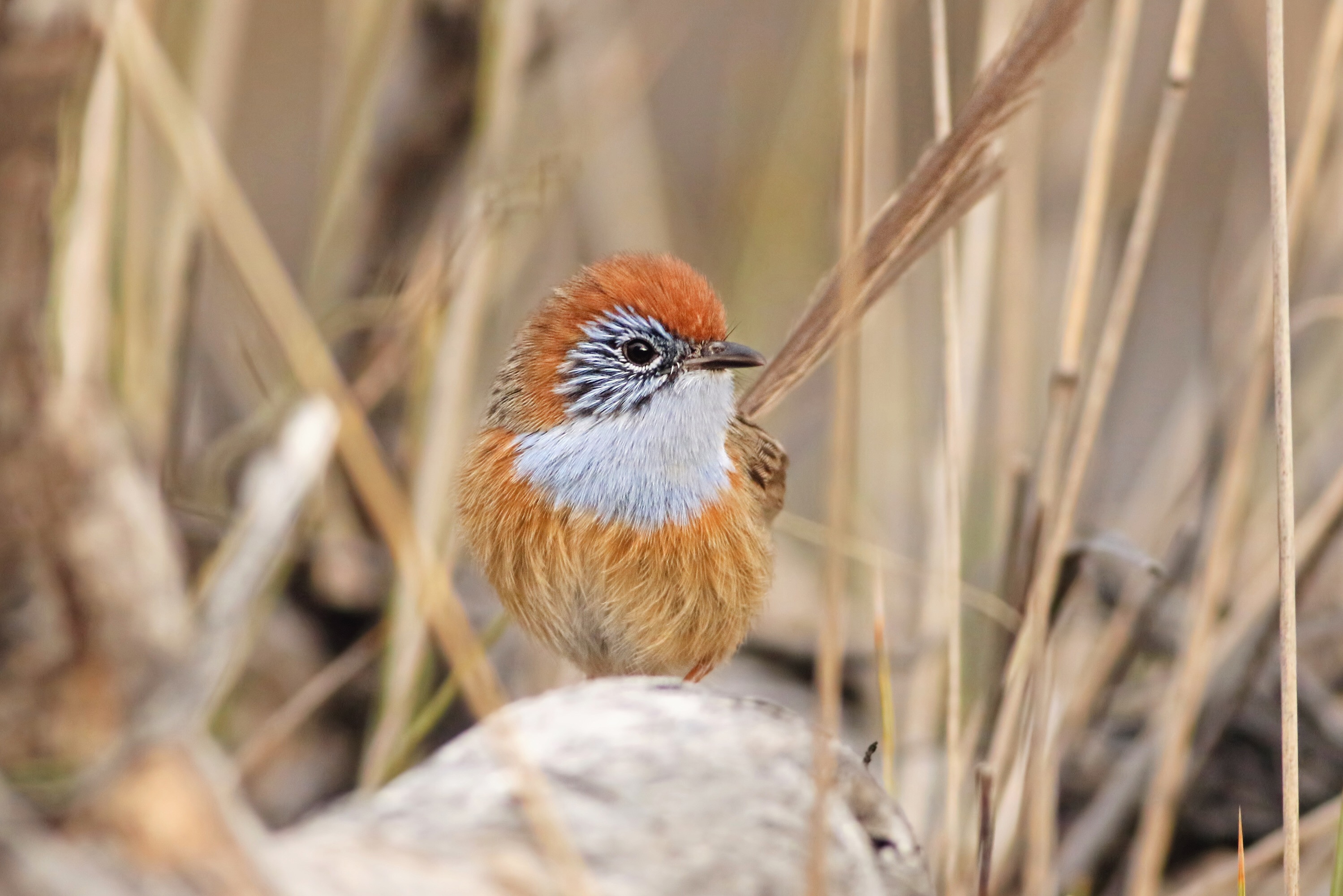

Three years later…
2018
Monday, April 23rd
5:00am With no sleep at all last night, we’re back at Hattah, and today is the day we try to bring birds back to South Australia. We have been working towards this moment for three years. Every single one of us is anxious and excited in equal measure. The sun is yet to rise. We are all here and we are all ready. It is time to find out if we can even catch these birds.
9:00pm We caught sixteen birds in a single day – we are over the moon and jumping for joy! To see a bird like this up-close feels dream-like and somehow unreal; they are so small and full of life. Whole family groups are now calling from transport boxes, stacked side‑by-side in South Australia. Now we wait for morning and try to get some sleep.
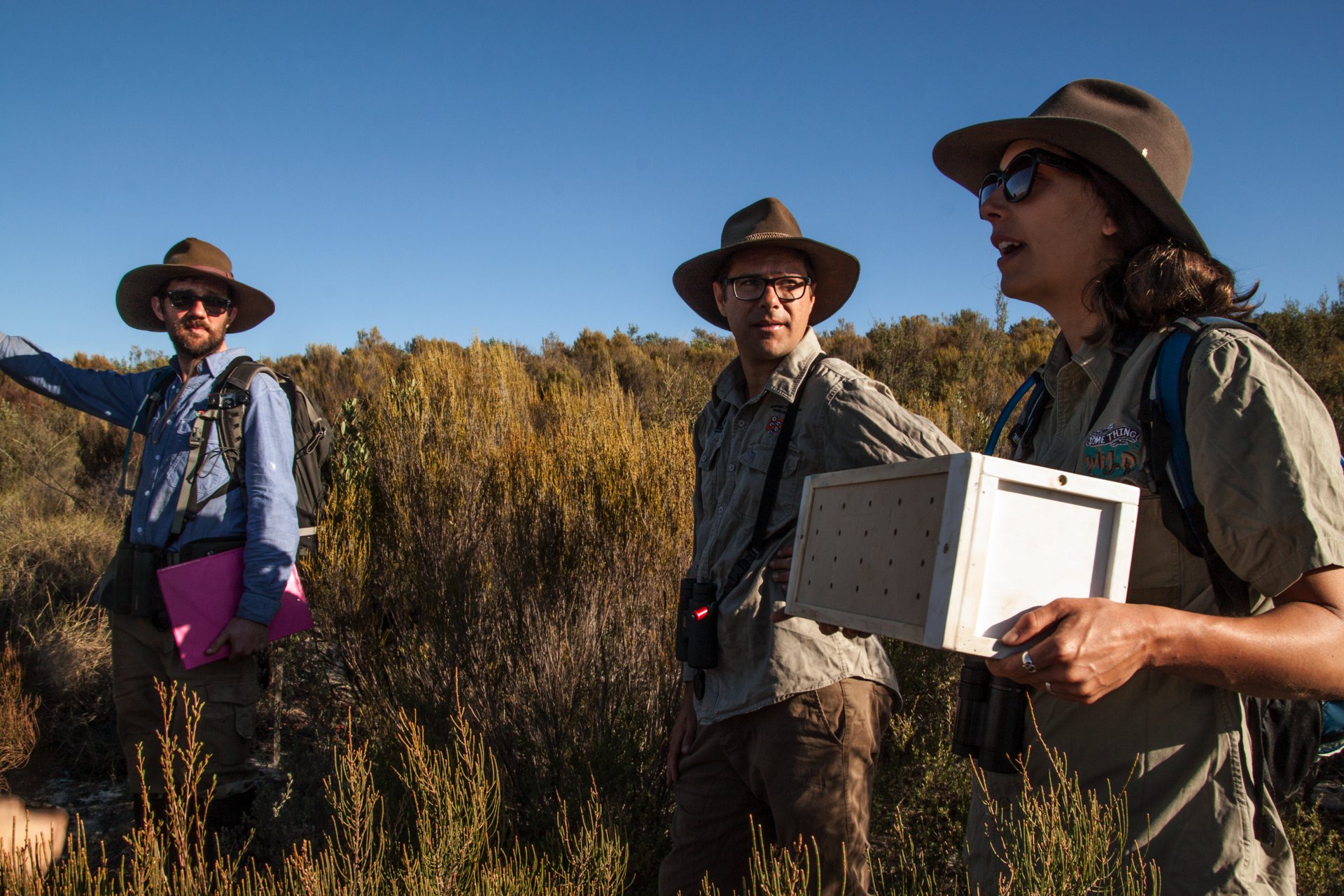


Tuesday, April 24th 2018 We walk to the release site in single file, carrying the boxes in our arms. We are overexcited and try to whisper, rather than shout. We want so much for this to be a turning point for the species. We want this to be a key moment in its history. We feel electric with hope.
Moments later, we stand in silence at the release site, waiting for the birds to show. No one moves. Minutes pass by. Then, in the morning sun the first bird emerges from the box – a stunning male with his bright blue breast and a meal-worm in his beak. Others soon follow in a fast-moving flash, taking cover in the shrubs. They call like I’ve never heard before. An absolute cacophony of tiny birds. Then, they reconvene and go silent, before moving like ghosts through the undergrowth. They are looking for a place to call home.
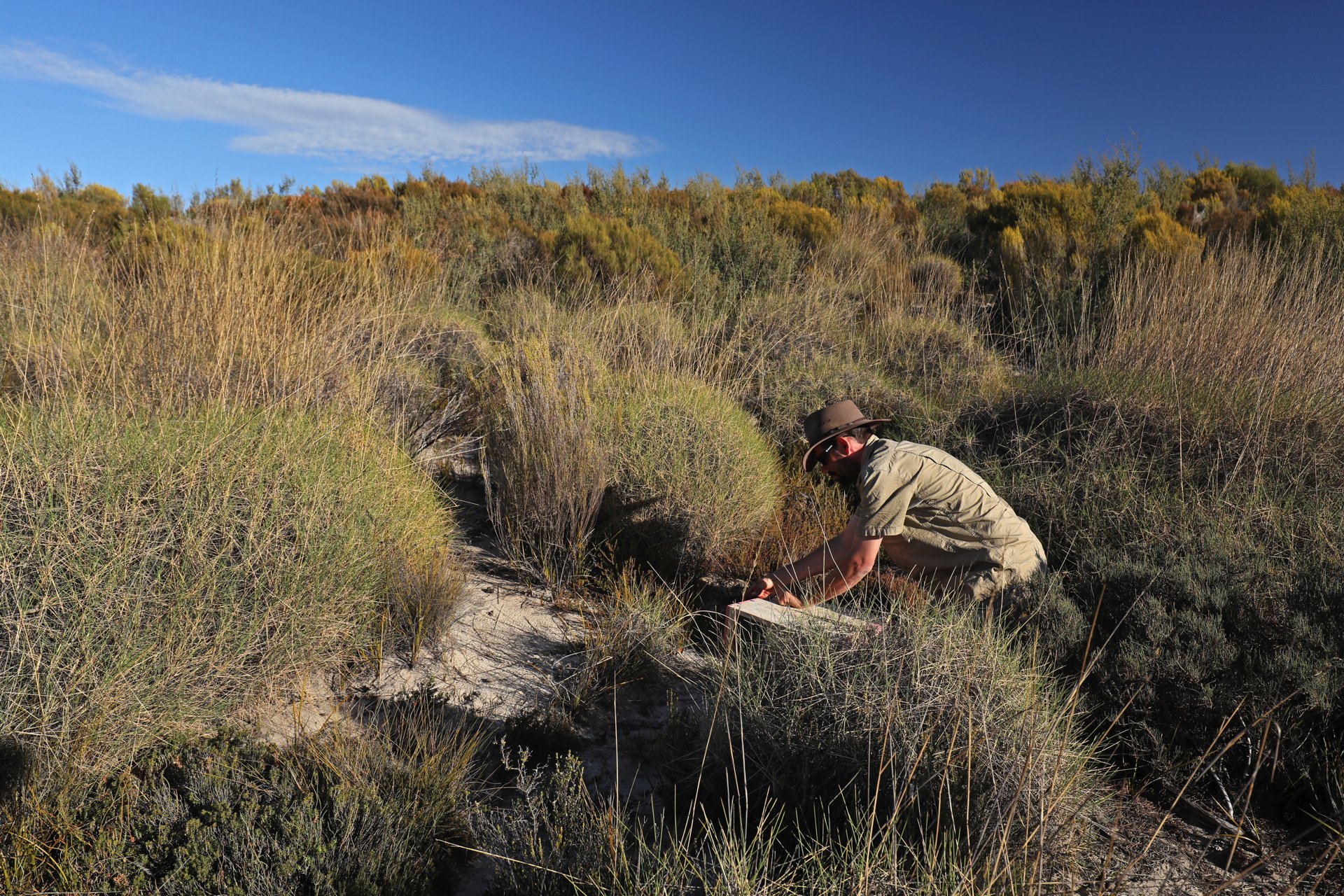
The program to bring Mallee Emu-wrens back to South Australia is currently in full swing. While this program is ongoing, all signs indicate that the released birds are becoming established in their new habitat. This result is a credit to Natural Resources South Australian Murray-Darling Basin who lead the project.
This project is supported by the South Australian Murray-Darling Basin Natural Resources Management Board through funding from the Australian Government’s National Landcare Program and NRM levies, as well as contributions from all project partners including BirdLife Australia, Zoos SA, the Victorian Department of Environment, Land, Water and Planning, Parks Victoria, Rotary International, La Trobe University, Monash University and Zoos Victoria.
Banner image courtesy of Tom Hunt.

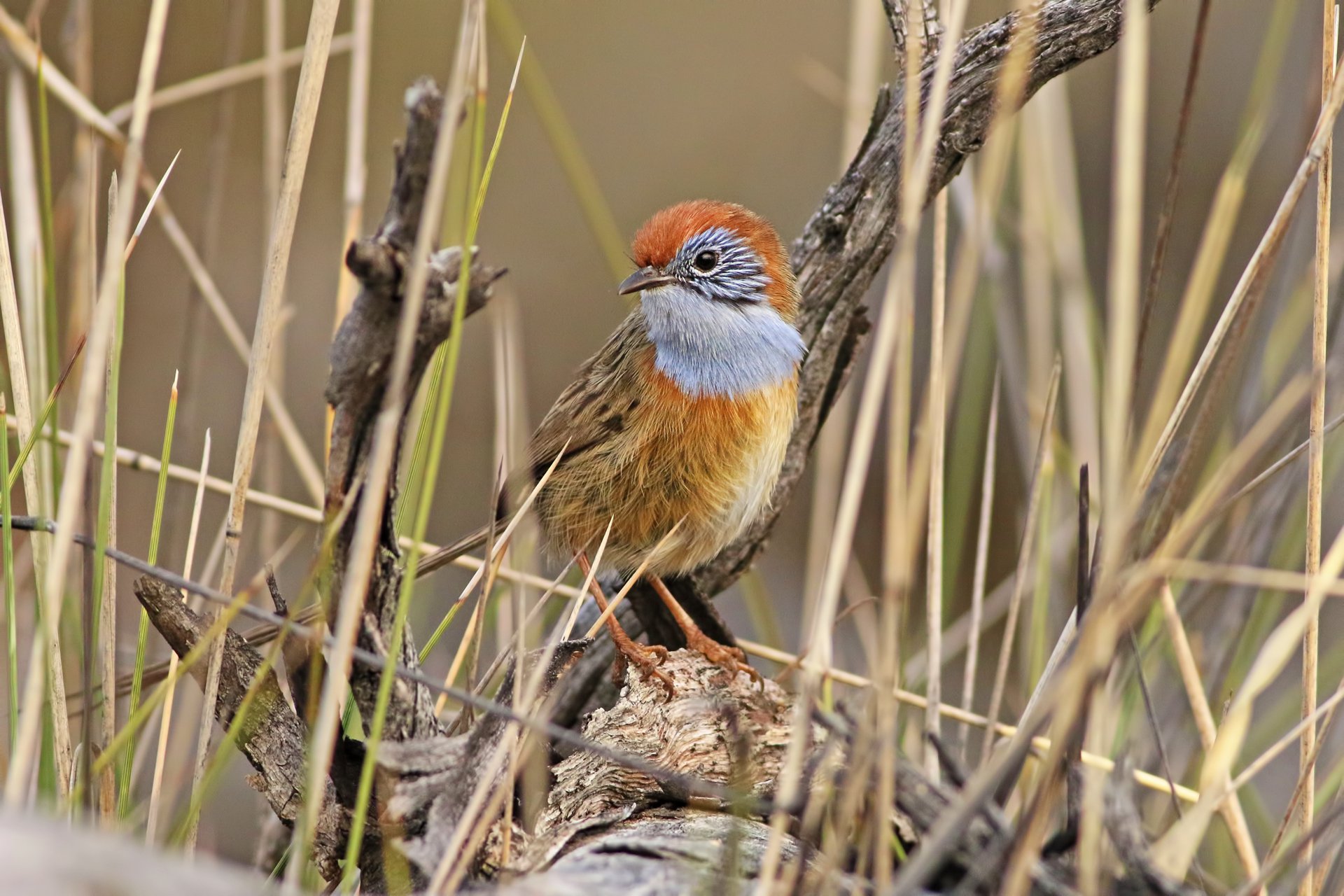
Leave a Reply